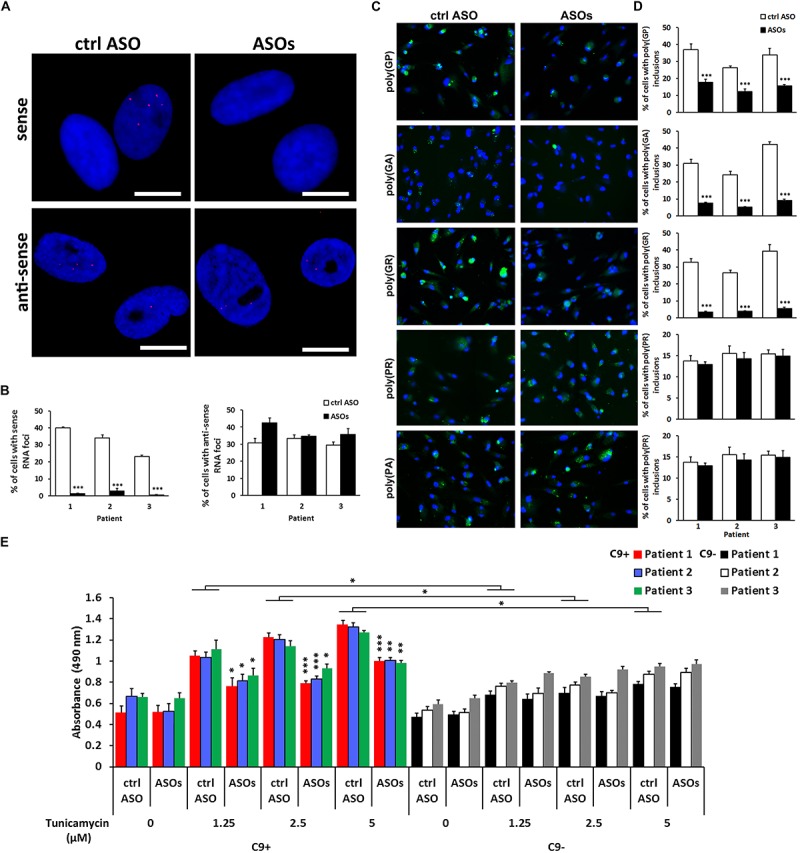FIGURE 4.

Effect of anti-sense oligonucleotides(ASOs) targeting the sense strand of the c9orf72 repeat, r(GGGGCC)exp, on RNA foci staining, c9RANT products accumulation and cell viability. (A) ASOs reduced the number of iNeurons with visualized sense but not anti-sense RNA foci. Magnification, 20 ×. (B) Quantification of iNeurons containing RNA foci. Data represents mean ± standard error of the mean (SEM; n = 4, each with at least 300 cells from 12 wells in 96-well plates). (∗∗∗p < 0.001). (C) Treatment with ASOs reduced the number of cells with inclusions formed by sense RANT peptides: poly(GP),(GA), and (GR) while products translated only from the anti-sense strand, poly(PR) and (PA), remained unchanged. Blue staining: Hoechst 33258. Scale bars, 20 μm. (D) Quantification of iNeurons containing inclusions formed by RANT products. Data represents mean ± standard deviation (SD; n = 3). (∗∗∗p < 0.001). (E) ASOs reduce the dose-dependent tunicamycin toxicity in C9 + iNeurons. Data represents mean ± standard error of the mean (SEM; n = 4, each with data from two wells). (∗p < 0.05, ∗∗p < 0.005, ∗∗∗p < 0.001).
